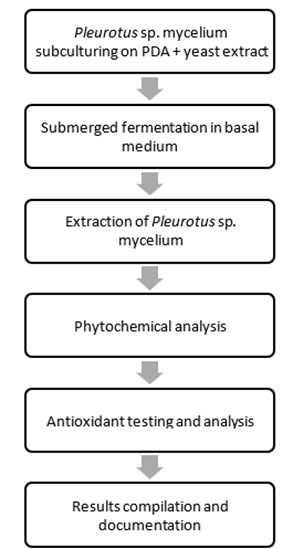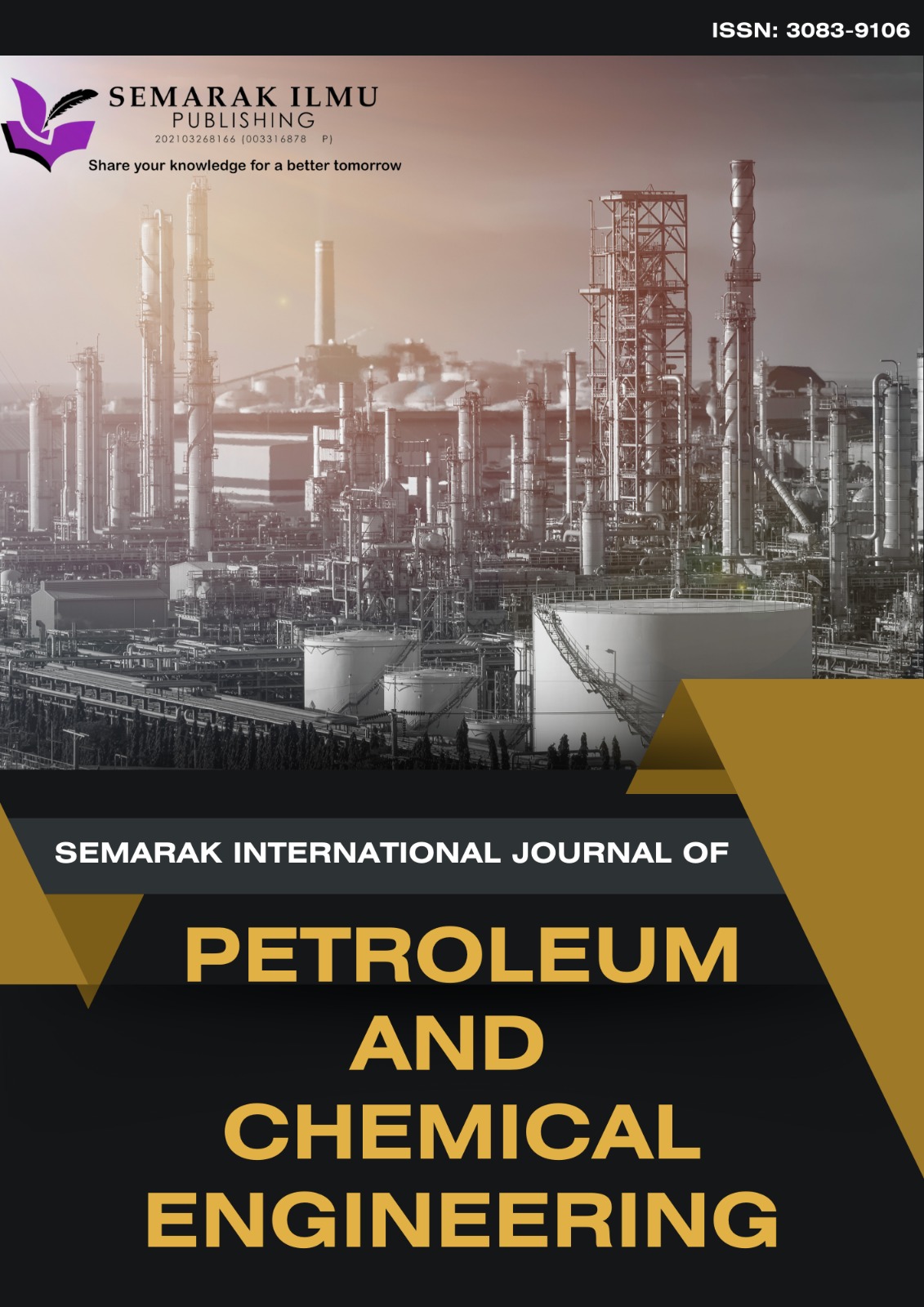Study on Phytochemicals and Antioxidants of Pleurotus sp. Cultivated through Submerged Fermentation
DOI:
https://doi.org/10.37934/sijpce.1.1.114aKeywords:
Bioactive compounds, Pleurotus sp., mushroom mycelium, submerged fermentation, hot water extraction, phytochemical analysis, DPPH assay, nitric oxide free radical scavenging assay, standard curve, percentage of inhibitionAbstract
This study investigates the bioactive compounds present in the genus Pleurotus sp. mushrooms, with a focus on their antioxidant properties. Hot water extraction of Pleurotus mycelium was performed at three temperatures: 30°C, 65°C, and 100°C. A total of 57.48 g of mycelium biomass was obtained through submerged fermentation in basal medium. The objective was to identify specific phytochemicals and evaluate the percentage of free radical inhibition. The mycelium was initially cultured on Potato Dextrose Agar plates and later subjected to fermentation. Six phytochemical tests were carried out to detect alkaloids, flavonoids, triterpenoids, saponins, phenolic compounds and anthraquinones. The analysis revealed the presence of triterpenoids, saponins, and phenolic compounds. Antioxidant activity was assessed using the DPPH and nitric oxide scavenging assays. The DPPH assay showed the 65°C extract had the highest inhibition of 97.92%, while the 100°C extract exhibited the highest inhibition at 82.67%, with the 65°C extract showing the lowest at 75.38%. The results suggest that extracts at 65°C demonstrated substantial antioxidant activity, comparable to synthetic antioxidants.













